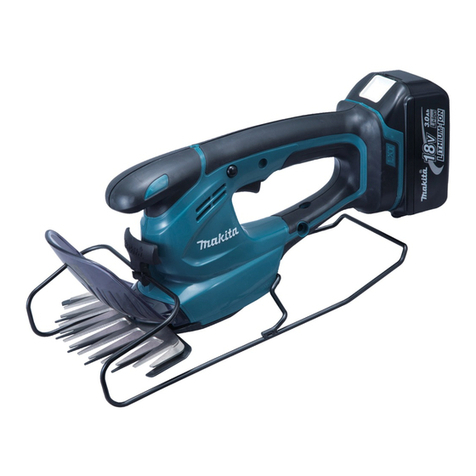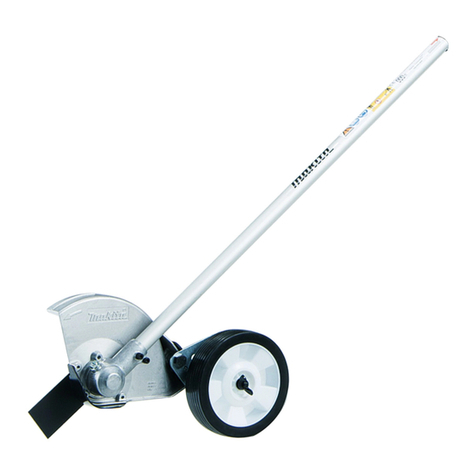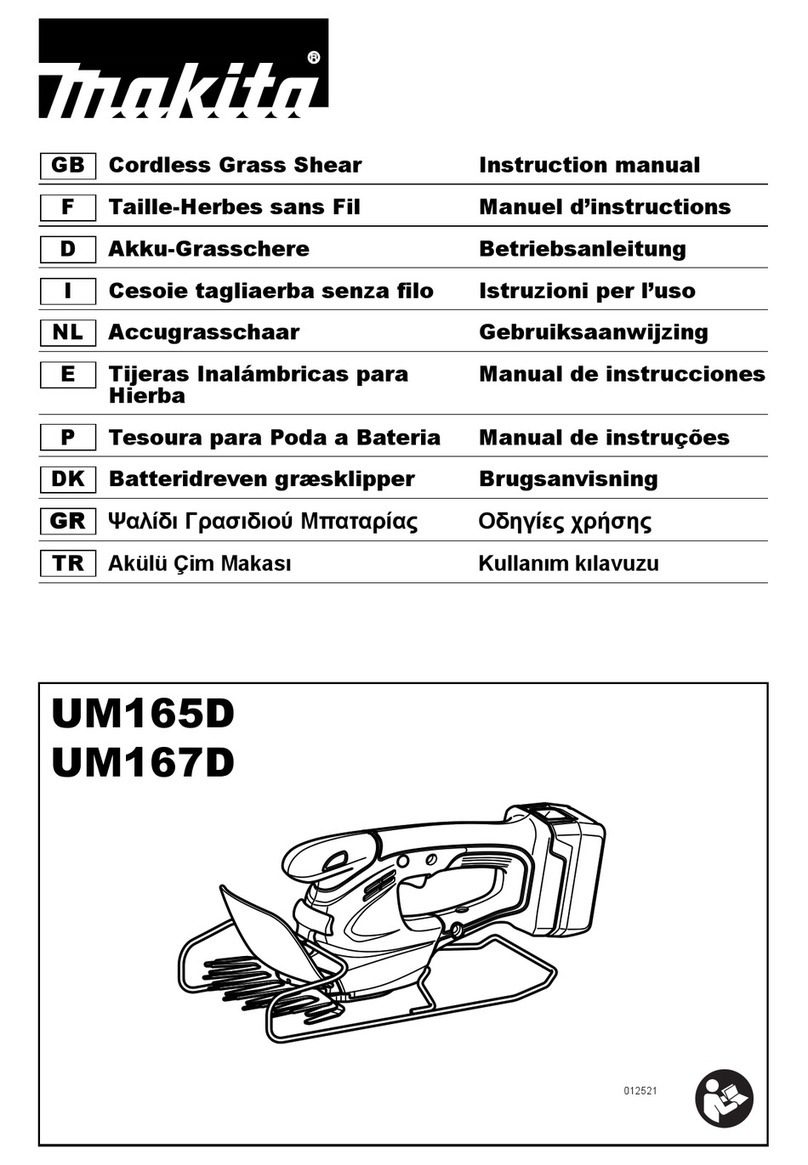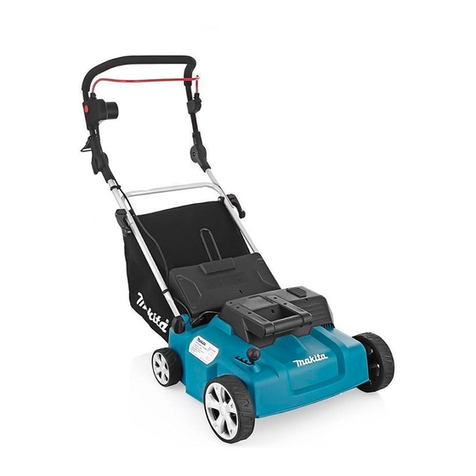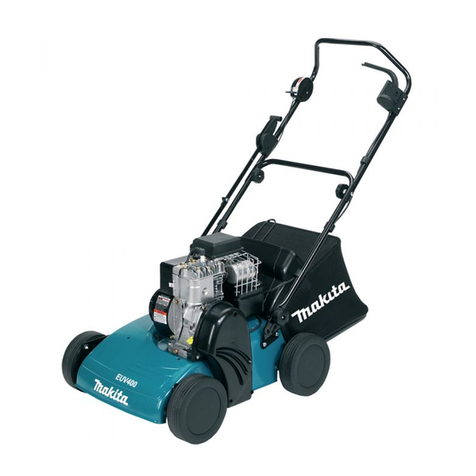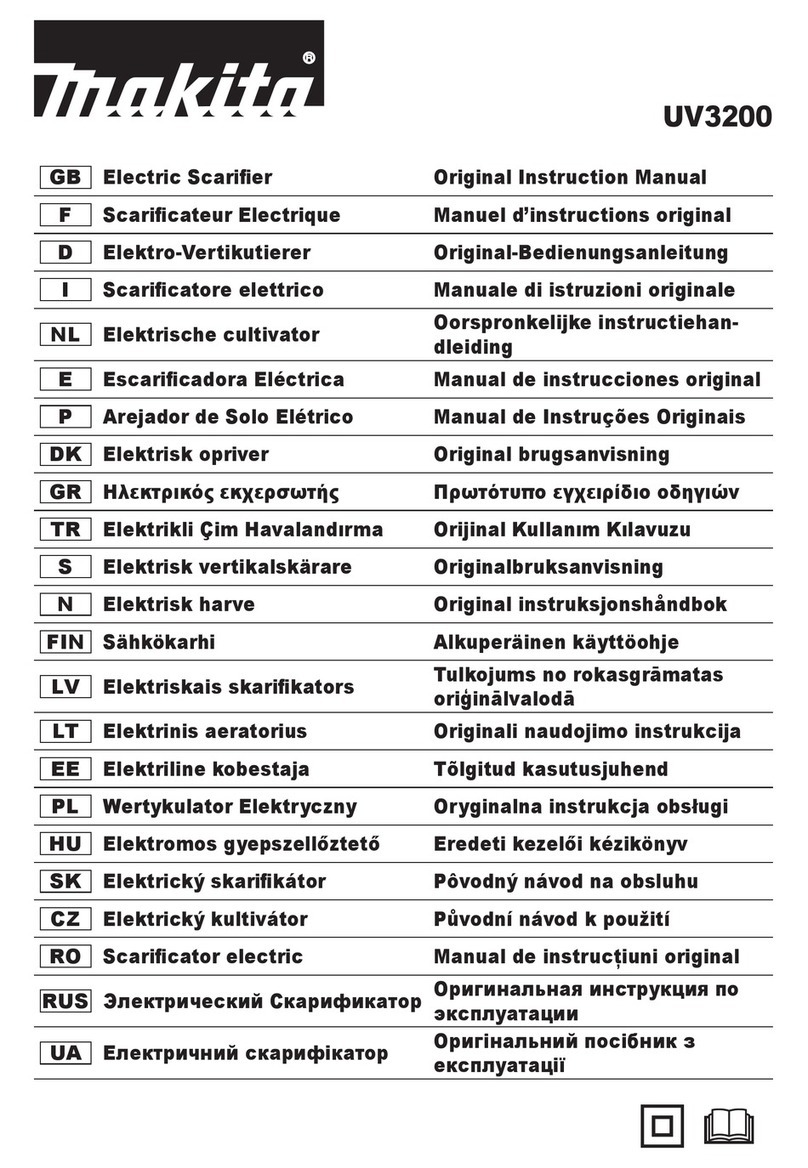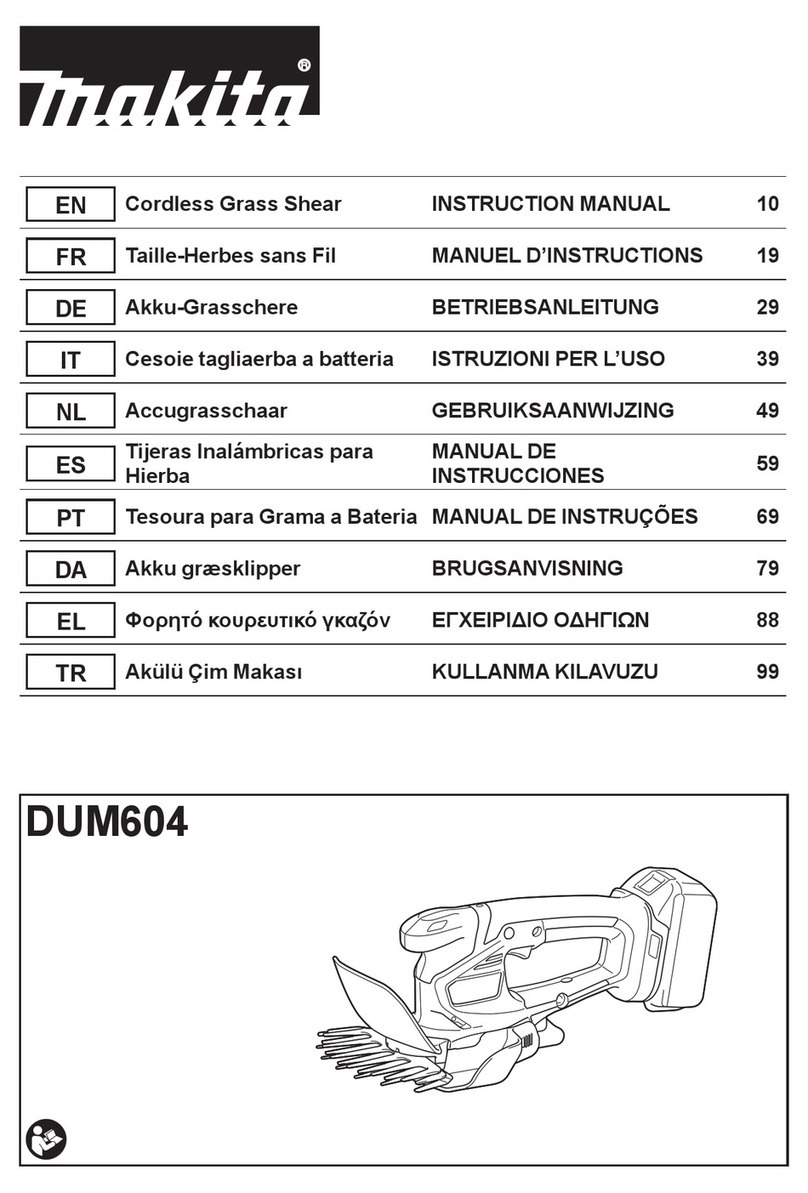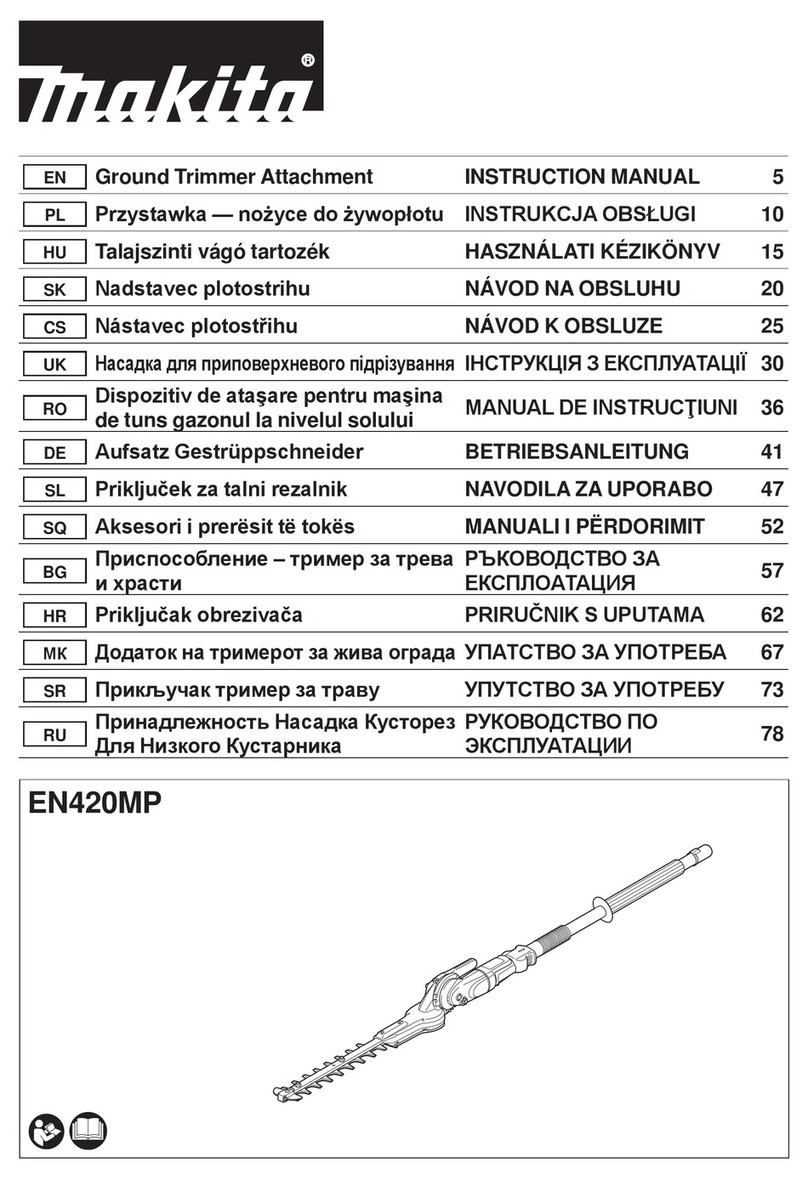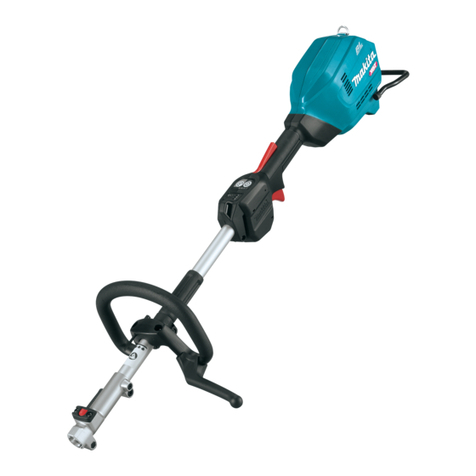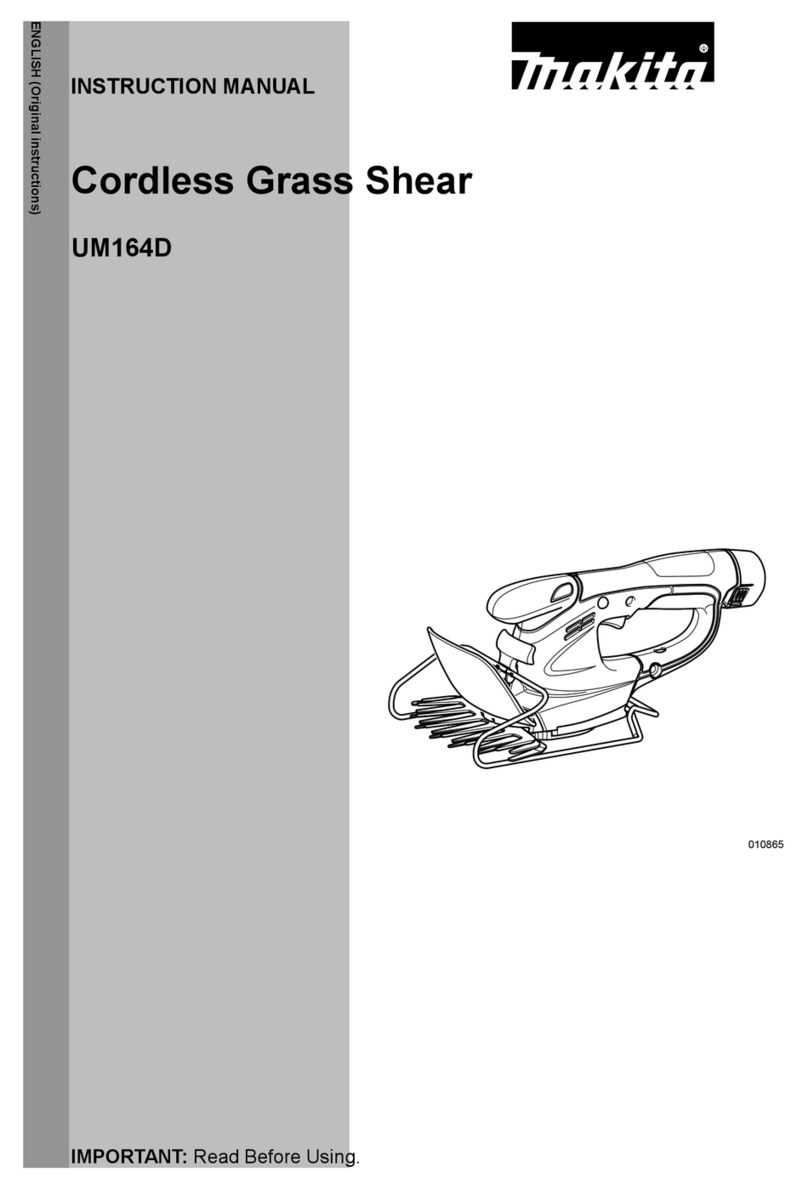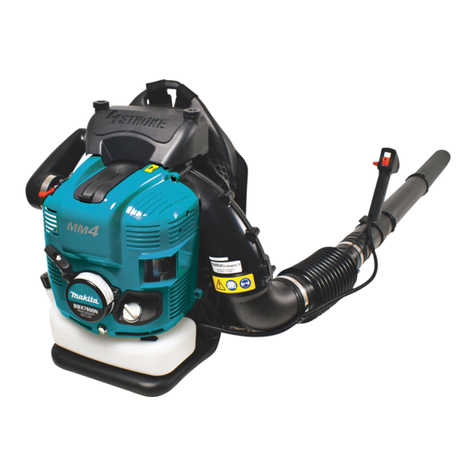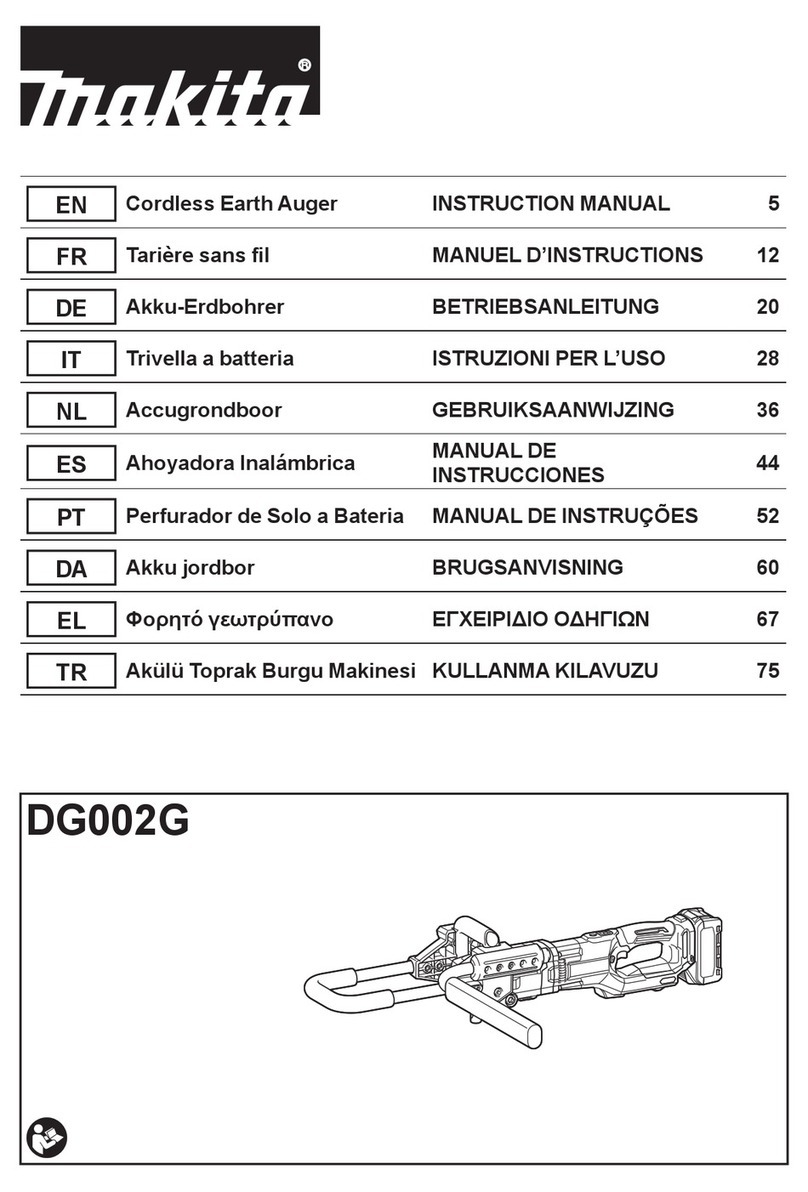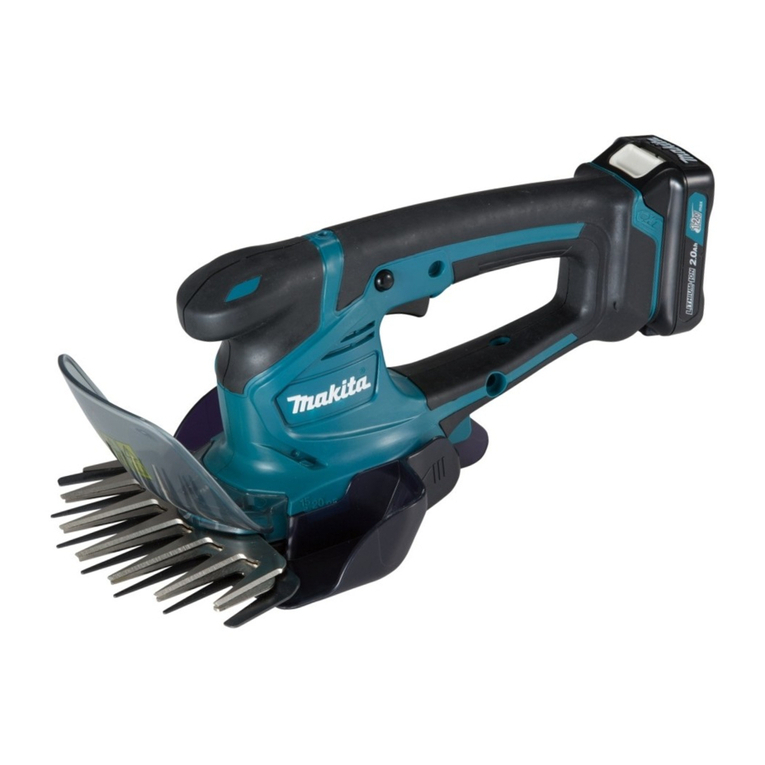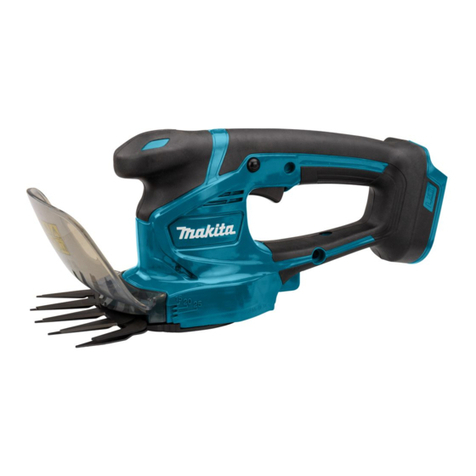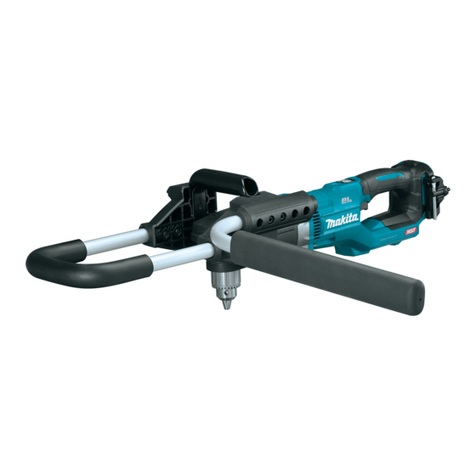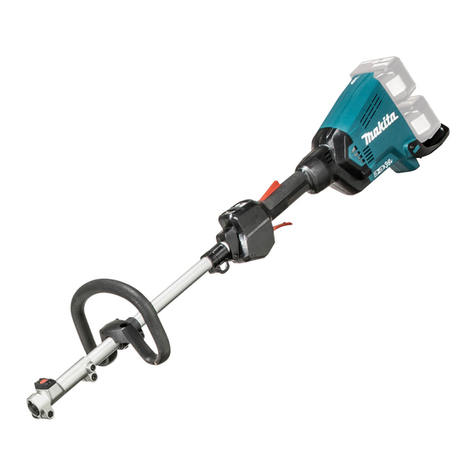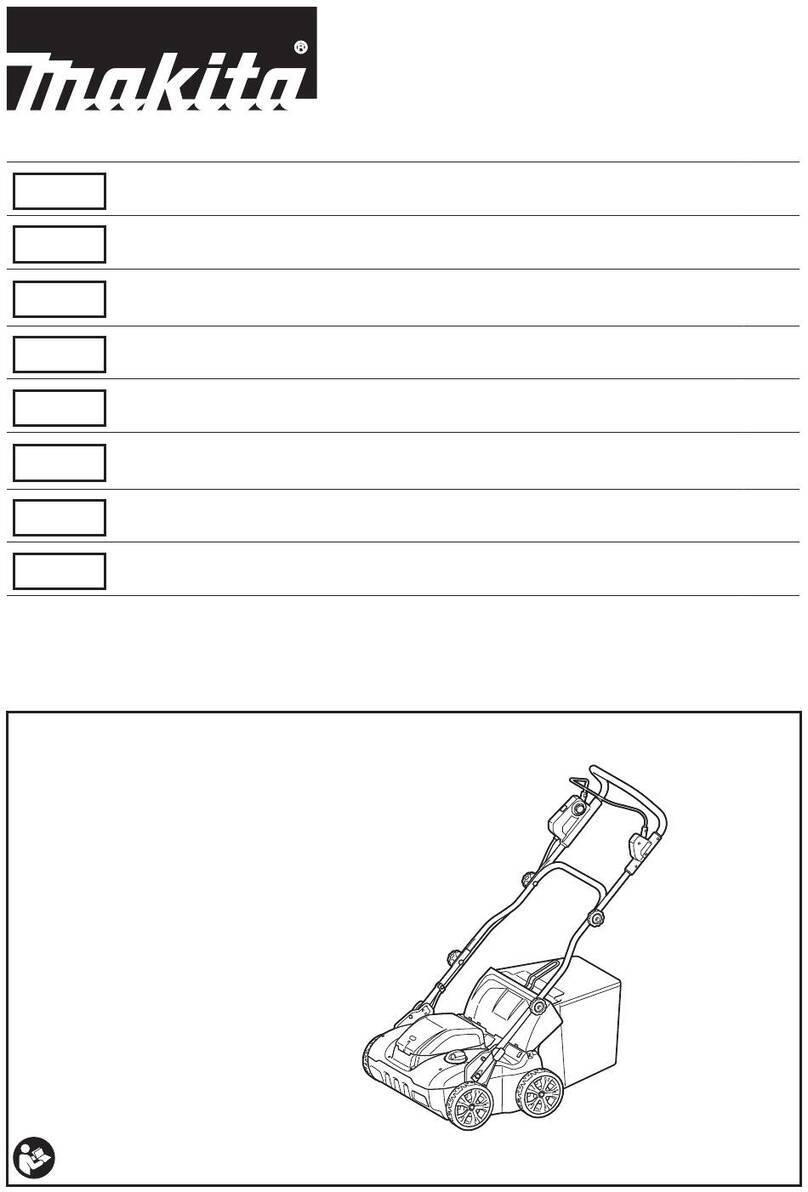4ENGLISH
14. Store idle appliances indoors - When not in use,
appliances should be stored indoors in dry, and
high or locked-up place out of reach of children.
15.
Maintain appliance with care - Keep cutting edge
sharp and clean for best performance and to reduce
theriskofinjury.Followinstructionsforlubricating
and changing accessories. Inspect appliance cord
periodically, and if damaged, have it repaired by an
authorized service facility. Inspect extension cords
periodically and replace if damaged. Keep handles
dry, clean, and free from oil and grease.
16. Check damaged parts - Before further use of the
appliance, a guard or other part that is damaged
should be carefully checked to determine that
it will operate properly and perform its intended
function. Check for alignment of moving parts,
binding of moving parts, breakage of parts, mount-
ing, and any other condition that may affect its
operation.Aguardorotherpartthatisdamaged
should be properly repaired or replaced by an
authorized service center unless indicated else-
where in this manual.
17. A battery operated appliance with integral
batteries or a separate battery pack must be
recharged only with the specied charger for
the battery.Achargerthatmaybesuitableforone
typeofbatterymaycreateariskofrewhenused
with another battery.
18. Use battery operated appliance only with spe-
cically designated battery pack. Use of any
otherbatteriesmaycreateariskofre.
19. Remove adjusting keys or wrenches before
turning the appliance on.Awrenchorakeythat
is left attached to a rotating part of the appliance
mayresultinpersonalinjury.
20.
Do not use appliance if switch does not turn it
on or off.Anappliancethatcannotbecontrolled
with the switch is dangerous and must be repaired.
21. Disconnect battery pack from appliance or
place the switch in the locked or off position
before making any adjustments, changing
accessories, cleaning, removing material from
the appliance or storing the appliance. Such
preventive safety measures reduce the risk of
starting the appliance accidentally.
22. When battery pack is not in use, keep it away
from other metal objects like: paper clips,
coins, keys, nails, screws, or other small metal
objects that can make a connection from one
terminal to another. Shorting the battery termi-
nalstogethermaycausesparks,burns,orare.
23. Use only accessories that are recom-
mended by the manufacturer for your model.
Accessoriesthatmaybesuitableforoneappli-
ancemaycreateariskofinjurywhenusedon
another appliance.
24. Appliance service must be performed only by
qualied repair personnel. Service or mainte-
nanceperformedbyunqualiedpersonnelmay
resultinariskofinjury.
25. When servicing an appliance, use only identi-
cal replacement parts. Follow instructions in
the Maintenance section of this manual. Use of
unauthorized parts or failure to follow Maintenance
instructionsmaycreateariskofshockorinjury.
26. Keep hands away from blades.
27. Before cutting grass, remove foreign matter
such as rocks and large sticks from the work
area. Be careful not to catch foreign matter
between blades, otherwise blades may be
jammed. If this happens, switch the appliance off.
Thenremovetheobstructionfromtheblades.
28. When not in use, be sure to cover the blades
with blade cover.
WARNING: DO NOT let comfort or familiarity
with product (gained from repeated use) replace
strict adherence to safety rules for the subject
product. MISUSE or failure to follow the safety
rules stated in this instruction manual may cause
serious personal injury.
Cordless Hedge Trimmer Safety
Warnings
1. Keep all parts of the body away from the cut-
ter blade. Do not remove cut material or hold
material to be cut when blades are moving.
Make sure the switch is off when clearing
jammed material. Blades coast after turn off. A
moment of inattention while operating the hedge
trimmermayresultinseriouspersonalinjury.
2. Carry the hedge trimmer by the handle with
the cutter blade stopped. Properhandlingofthe
hedgetrimmerwillreducepossiblepersonalinjury
from the cutter blades.
3. Hold the power tool by insulated gripping
surfaces only, because the cutter blade may
contact hidden wiring. Cutter blades contacting
a "live" wire may make exposed metal parts of the
power tool "live" and could give the operator an
electric shock.
4. DANGER - Keep hands away from blade.
Contact with blade will result in serious personal
injury.
5. Do not use the hedge trimmer in the rain or in
wet or very damp conditions.Theelectricmotor
is not waterproof.
6. First-time users should have an experienced
hedge trimmer user show them how to use the
trimmer.
7. The hedge trimmer must not be used by
children or young persons under 18 years of
age. Young persons over 16 years of age may be
exempted from this restriction if they are undergo-
ing training under the supervision of an expert.
8. Use the hedge trimmer only if you are in good
physical condition. If you are tired, your attention
will be reduced. Be especially careful at the end of
aworkingday.Performallworkcalmlyandcare-
fully.Theuserisresponsibleforalldamagesto
third parties.
9. Never use the trimmer when under the inu-
ence of alcohol, drugs or medication.
10. Work gloves of stout leather are part of the
basic equipment of the hedge trimmer and
must always be worn when working with it.
Also wear sturdy shoes with anti-skid soles.


